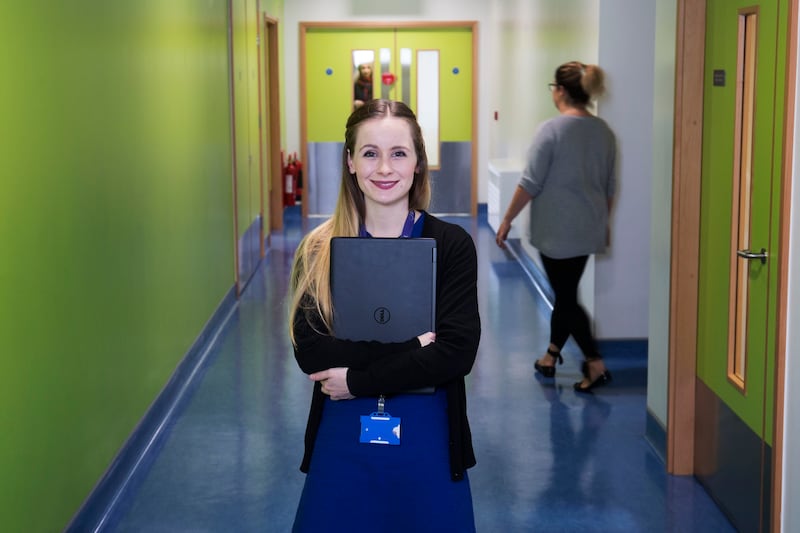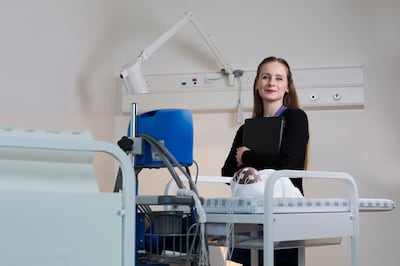Seizures in newborn babies are one of the most common indicators of a serious neurological condition, but are very difficult for medical teams to detect.
Unlike adults, newborn infants often don’t show any visible signs that they are having a seizure. And the severity of the seizure, and any long-term consequences, will vary depending on the cause.
Researchers in Cork are now using Artificial Intelligence (AI) to detect seizures as they occur so that prompt treatment can be provided and long-term outcomes improved for these babies who have a difficult start in life.
The standard monitoring for newborns at risk of seizure up to now has been an EEG to measure the tiny electrical impulses from the brain using small sensors applied to the scalp.

However, as electronic engineer Alison O’Shea points out, the EEG of an newborn infant is very different to that of an adult and they need to be interpreted by specialist paediatric neurologists who are limited to specialised neonatal units and not always available.
A PhD candidate with the Irish Centre for Fetal and Neonatal Translational Research (Infant) at University College Cork, O'Shea is applying a deep learning algorithm in the area of neonatal EEG processing so that seizures can be detected in real time and staff alerted immediately. She has developed, tested and trained a computer algorithm using data from the EEGs of infants in the NICU at Cork University Maternity Hospital.
“You can’t retrospectively treat a seizure which is why seizure detection systems are so important,” she explains. “The brain can be damaged during a seizure, but the earlier you can alert staff to the fact that a seizure is occurring and treat the baby with medication, the better the outcome for the baby. This algorithm will not mean the end of diagnostic experts, but rather will be a helper at the cot side and an early alarm system.”
O'Shea's research follows on from the ANSeR project which led to the development of another seizure detection algorithm by Prof Geraldine Boylan and her team at Infant. Tech companies have expressed interest in the ANSeR algorithm which was trained over many years to detect seizures 24/7 and to help medical staff interpret EEGs at the cot side.
O’Shea explains that traditional machine-learning algorithms, such as ANSeR, rely on the extraction of features known to be good indicators of seizures, and so have a more limited capacity for modelling complex inputs. This type of algorithm works well in full-term babies as many years of research have been undertaken into finding the best features for seizure detection.
“The full-term baby’s brain is one challenge, but the pre-term brain is another huge challenge. In some cases, babies are born months before nature intended and their brains still have a huge amount of development to do which means their EEG patterns are massively different, even to a full-term baby.
“The traditional algorithms don’t work very well on the pre-term baby brain, but there is a real potential to apply deep learning to this area and hopefully to learn more about the pre-term brain.”

O’Shea’s new Convolutional Neural Network (CNN) algorithm does not require any human selected features, but can extract its own features from a given data set, eg EEGs.
“The fact that we were able to match and outperform many machine learning algorithms which have been worked on for years without the aid of any clinical knowledge (features) was very unexpected. I believe this by-passing of feature extraction could really prove it’s worth when it comes to signals where our clinical knowledge is more limited such as the pre-term baby brain,” O’Shea says.
Being born too soon is the second leading cause of death for babies under five worldwide. The WHO is concerned that pre-term birth rates are increasing in many countries.
A world leading perinatal research centre funded by Science Foundation Ireland, Infant focuses on how technology and medicine can improve the health outcomes for neonates (infants less than four weeks old).












